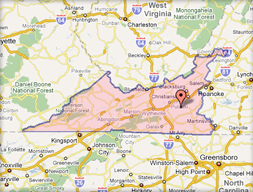| Communications Subcommittee Holds Second Hearing on Recovery Act Broadband Program (Sept. 10, 2009) |
 |
 |
|
Subcommittee on Communications, Technology and the Internet Hearing Oversight on the American Recovery and Reinvestment Act: Broadband, Part 2
September 11, 2009
Good morning.
Today the subcommittee conducts a second oversight hearing regarding the $7.2 billion provided by the economic Recovery Act for broadband programs.
The Act requires that the programs be administered by the U.S. Department of Commerce through the NTIA and the Department of Agriculture through its Rural Utilities Service.
It's my pleasure to welcome this morning the NTIA Director, Assistant Secretary for Communications and Information Larry Strickling, and Rural Utilities Service Administrator Jonathan Adelstein who will discuss the process they have undertaken for the first round of funding and the standards their agencies have developed that will govern the funding awards.
The Recovery Act's broadband program presents an historic opportunity for increasing the availability of broadband and elevating the standing of the United States among developed nations in the percentage of the population that uses it, but the program will only be as effective as the standards for the award of grants and loans enable it to be. I have some concerns about the standards that have governed the first round of funding and encourage the agencies to consider modifying them prior to publication of the Notice of Funds Availability for the second round.
My first concern regards access to grant funding for rural applicants. In many circumstances involving very small communities that lack broadband, only through grant funding can broadband access be achieved. While in some situations loan funding can be sufficient, for communities with small populations that are isolated by mountains the cost of building broadband can be great and with populations as few as 100 homes, that cost can't be recovered through the revenues to be realized from the broadband service.
In these situations, which are commonly found, only through the award of grants can a broadband infrastructure be built.
In the RUS program, a grant of between 80 and 100 percent of project costs is only available to communities that are remote, and any community that is within 50 miles of a city of at least 20,000 is considered non-remote, disqualifying that community from receiving grants of more than 50 percent under the RUS program.
Almost the entire eastern U.S. is disqualified from 80 to 100 percent grants by this inappropriate standard, which in mountainous terrain is not a reasonable yardstick for determining need.
In Virginia, West Virginia and other states in the Appalachian region, hundreds of communities in isolated mountain valleys may be within only a few miles of a city but because of the high cost of building the fiber optics or wireless links in such challenging topography and given the small size of the population to be served, only through grants of 80 percent or more of the project cost can these communities receive broadband.
The previously existing RUS Community Connect program is well suited to the need I have described, but that program is very small with only $13 million available for grants nationwide in one recent year.
I would urge that in round two, the definition of remote be changed to qualify more truly isolated communities that may be close to a city. In the circumstances I have described, that proximity is functionally irrelevant.
My second concern is that for rural applicants to be considered for the NTIA program which has more flexible rules for making grants of 80 to 100 percent, the application must first go to RUS and be rejected before NTIA can make an award to the applicant. As a practical matter, I wonder if by the time RUS has reviewed and rejected an application as not qualified under RUS rules, there is time remaining in the funding cycle for NTIA to review it and consider it on equal footing with applications made initially to NTIA. In the next round, I hope you will consider allowing applicants to designate which agency will be primary for considering the application.
My third concern relates to the standards that are used to determine areas that are underserved. They appear to be highly restrictive.
One of three standards would have to be met:
And so I am concerned that these standards will result in many communities finding tha the program is less helpful to them than we intended for it to be.
My final concern is that apparently the states have been handed NTIA's applications for initial review. We intended for NTIA to have final decision making authority over its applications, and I am looking for assurance today that it will.
-###- |
Hot Links
Subcommittee On Communications, Technology And The Internet
Subcommittee On Energy And Environment






